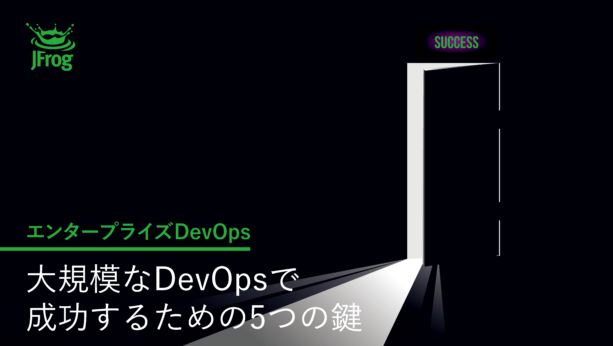エンタープライズDevOps | 大規模なDevOpsで成功するための5つの鍵
DevOpsのメリットを実感すると企業は自然にもっと大規模な環境で活用しようとします。しかしチームがDevOpsへの取り組みを拡大しようとすると、小規模なユースケースで機能しているツールやプロセスがうまく動かなくなることがよくあります。既存システムとクラウドの両方で、さまざまなチーム、ツールセット、アプリケーション、プロセス、ワークフロー、リリースサイクル、パイプラインをすべてサポートしなければなりません。そうしないと自動化サイロやDevOpsツールとプロセスが無計画にごちゃまぜになり、品質、セキュリティ、パフォーマンス、最終的には成功の度合いにも影響してきます。
今やソフトウェアが事実上すべてのビジネスを支え、促進しているため業界で成功することが生き残る上での必須の課題となってます。DevOpsはアプリケーション開発とデリバリの繰り返しの共同作業で、この新しいバリューチェーンの中心に位置しています。大規模なシステムを実装するには、適切な構造、プロセス、ツールが必要です。
本書では組織全体でDevOpsを効果的にスケールさせるための5つの主な原則について解説します。
JFrog Platform 無料クラウド版
ご利用はこちらから
https://jfrog.com/ja/start-free/#saas







